
BCDA Pres tackles USD 5 billion New Clark City, white elephants
The New Clark City is dubbed as “the vision of a modern Philippines,” and is being groomed to be the standard of how urban communities should be—green, sustainable, and optimal for human dwellings with an integrated transport system—a stark contrast to Metro Manila in the national capital region. The 9450-hectare ambitious development is funded through a partnership between the Bases Conversion and Development Authority (BCDA) and the private sector. BCDA is a state-run development corporation under the Office of the President of the Philippines, which owns and maintains Fort Bonifacio, Villamor Airbase, Clark Freeport Zone, Subic Bay Freeport Zone, Atmanda Eco Park (formerly Bataan Technology Park), Poro Point Freeport Zone, and John Hay Special Economic Zone. The New Clark City is one of its big-ticket projects under the Build Build Build program of the government, whose development is spearheaded by BCDA president and chief executive officer Vivencio ‘Vince’ Dizon.

Vince Dizon is also the BCDA representative to Clark Development Corporation; the chairman of the Subic-Clark Alliance for Development; the vice-chairman of Clark International Airport Corporation; and a member of the board of directors of Fort Bonifacio Development Corp., Bonifacio Estate Services Corp., and Bonifacio Global Estates Association. Prior to his appointment to BCDA in 2016, he was a consultant of then-Senate Majority Leader Alan Peter Cayetano, the Undersecretary for Political Affairs of the Office of the President, and the Chief of Staff of the Office of the late Senator Edgardo Angara. Dizon also worked in the academe for half a decade as a senior lecturer in Economics, and Finance and Statistics for the Bachelor of Science in Business Administration Program at the University of Northern Virginia, Prague Campus in the Czech Republic and as an assistant professor of Economics at De La Salle University in Manila. Dizon took his degrees in Bachelor of Arts in Economics and Bachelor of Science in Commerce major in Management of Financial Institutions from the De La Salle University. The Chevening Scholarship awardee (1998) then took his Master of Science in Applied Development Studies from the University of Reading in the United Kingdom.
The New Clark City’s first phase, which includes the National Government Administrative Center (NGAC) and the sports complex, is nearing its completion and turnover in late October, almost ready to host the 30th Southeast Asian Games from November 30 to December 10. Many have expressed their excitement on social media, while others are skeptical about the use of public funds on such an ambitious project, which they fear is unsustainable and will fall to disuse and disrepair after the SEA Games. Last 29 July, BluPrint visited the site and spoke with Dizon.

Here are some excerpts from the walking interview BluPrint’s editor had with Dizon, as he and MTD Philippines president Patrick Nicholas David showed us around the misty landscape of the New Clark City NGAC, and explained why the new metropolis is worth spending billions of pesos and how the new sports complex will not be another white elephant.
BluPrint: The role of BCDA in the development of the New Clark City would be?
Dizon: It’s good to start with the big picture. Under the Build Build Build (BBB) program of the government, Clark—not just the New Clark City, but the entire development of Clark—is one of the centerpieces of that unprecedented infrastructure build-up. The role of Clark in that huge BBB program, which aims to spend anywhere between 150 and 160 billion US dollars (about 8 trillion pesos) within the six-year term of President Duterte, is to create a new metropolis for the country. The role of the BCDA is to spearhead that development because this entire land area of Clark is all under its purview, and creating the new metropolis is the main focus of what we’re trying to do right now.
Let’s discuss the need for a new metropolis. If you live in Metro Manila, you’d probably know why there is a need for it. Right now, there is only one major metropolis in the country and that is Metro Manila. Metro Cebu might be big, but it also has the same problems as Manila. So, let’s put it this way: there’s only one major metropolis in Luzon, which has about 60 million people. Given that you only have one major metropolitan center servicing 60 million people, it shouldn’t come as a surprise why Metro Manila is the way it is.
Right. It also doesn’t come as a surprise why the growth and development, at least in Luzon, is only focused on the greater metropolitan Manila area. The rest of Luzon has been left behind. From an urban development perspective, there is a dramatically urgent need to build a new metropolis outside of Metro Manila, which frankly should have been planned and done decades ago.
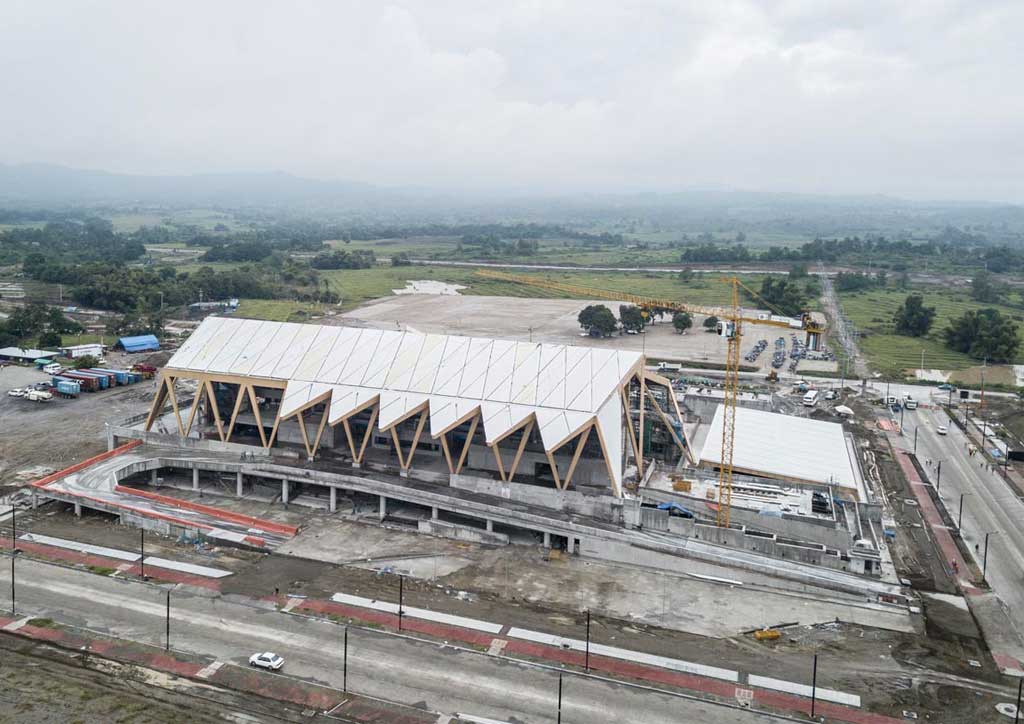
True. Creating a new metropolis has a two-pronged objective: 1) to decongest Metro Manila, which is now the densest city in the world with a population density of about 40,000 per square kilometer; and, 2) to spur growth and make it more inclusive and more spread out by building other metropolitan centers throughout the country. We are not just building sports facilities, a building here and there, or a couple of houses here and there. This is all part of a huge master-planned development to create that new metropolis.
And the plans are made by? For the New Clark City, the plan was a collaboration between our Japanese partners, the Japan Overseas Infrastructure Investment Corporation for Transport and Urban Development (JOIN), and AECOM, and Nippon-Koei. They did the masterplan for this way back, and it was finished in 2017. Now we included another partner, Surbana Jurong of Singapore, our development manager, to do the urban design standards and guidelines, and development management for the phasing of the city development. Right now, we are in the New Clark City Phase 1, the first 60 hectares of the development, which is the National Government Administrative Center.
Alright. So, the planners are your partners, like Surbana. What kind of partnership would that be? We have a joint venture with them and we rely on them on the technical aspects of the development. So, to make sure that the city is developed and phased properly, and to protect the sustainability and resiliency of the area, we have to institute the urban design standards and guidelines, which, unfortunately, we don’t really have in the Philippines yet. With the way developments have been made in the country, there is utter disregard in green and public spaces.
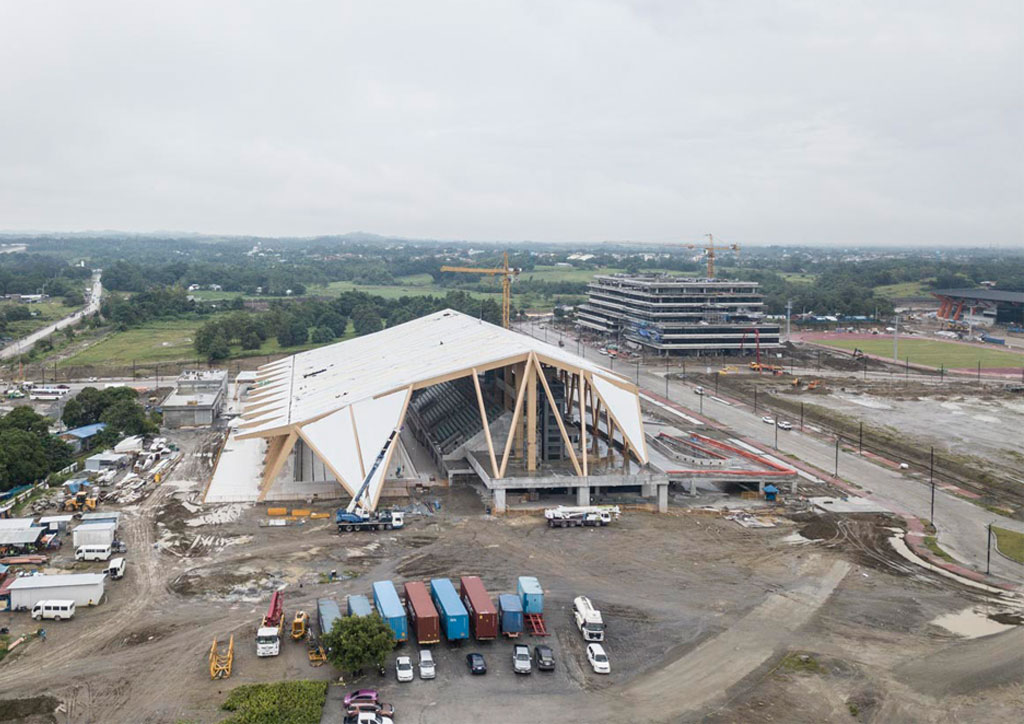
Tell us how it’s different here. The guidelines are very strict and benchmarked. For example, the easements between the river and the structures are wide. Some of them go as far as a hundred meters. Where we are now, there’s about a 120-meter easement. The zoning codes of Metro Manila require a 10-meter to 30-meter easement. For us, that’s too narrow because climate change is apparent and other problems may occur there. The worst thing is, despite the 10 and 30 meters easement, the codes are not followed. I mean, you’ve got houses right beside Pasig and Marikina rivers. Here, that will change. That’s the kind of discipline that we need in the country when we talk about urban development, which can only come from experts who have actually done this elsewhere. Obviously, it’s Asian Development Bank (ADB), Surbana Jurong… and we have to rely on them to implement this kind of large-scale development.
READ MORE: IN PHOTOS: New Clark City Sports Complex 94 days before turnover
And BCDA will oversee how things are run here? Yes, of course.
It is not a responsibility BCDA will let go of, even after the buildings are bought or leased? We cannot, because if we let go of that responsibility, things will just go haywire again, and you go back to the situation like our typical urban centers are faced with.
Also, the reason why the Clark area, including Subic, was chosen to build this new metropolis is 1) it has the necessary infrastructures in place already: an international airport, an international seaport, and a network of world-class highways (SCTEX and NLEX); and, 2) its location’s natural resiliency.
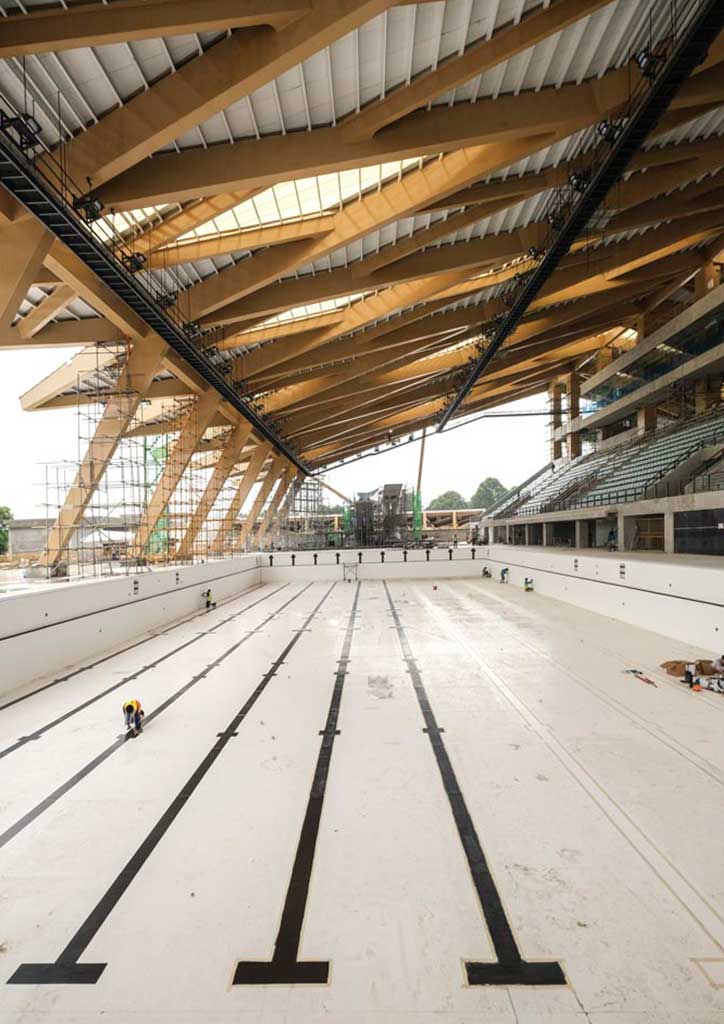
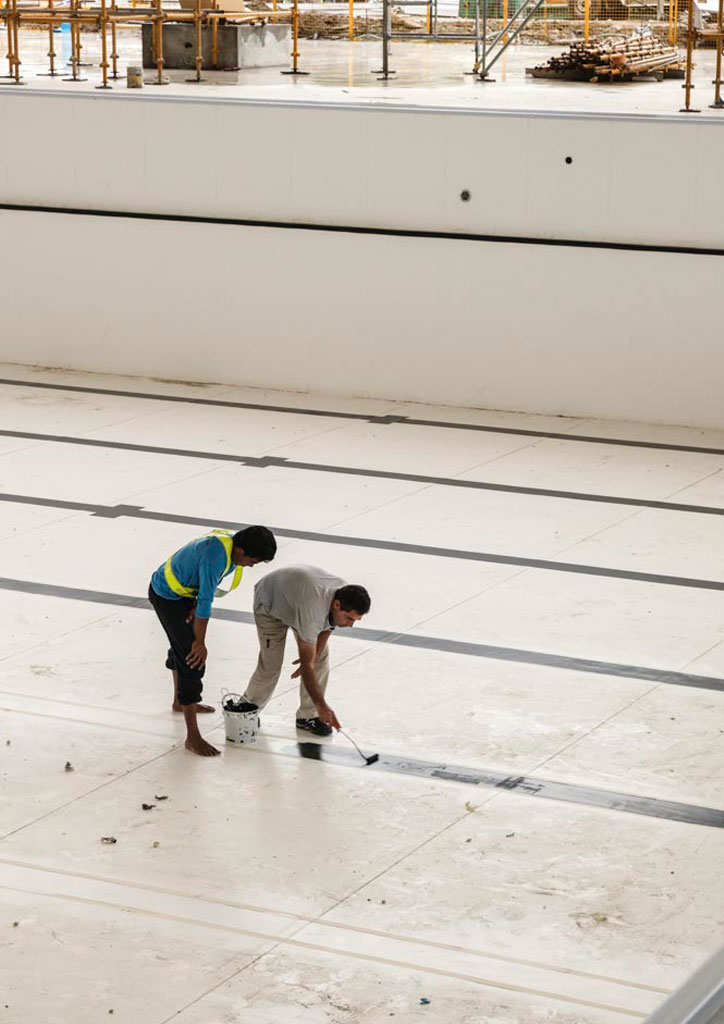
In what way? We have a volcano right beside us. Which will erupt maybe in the next 600 years, so that’s good for us. But the main indicator of the area’s resiliency is when the Americans chose it to be the major US base. They didn’t just choose it randomly; they chose this because of its natural resiliency: its elevation, natural contour, and its distance from a faultline. Metro Manila has an average elevation of 1.5 to 2 meters above sea level. The entire 32,000-hectare Clark area is at 65 to 70 meters above sea level, and that is the lowest area in Clark. Also, this site was not meant to be flat. Nature designed it to be undulating, so it adds to the resiliency. It protects us from floods and all sorts of possible natural problems in the future. Lastly, we are 20 kilometers away from the nearest faultline, the East Zambales fault to the northwest. The site is not earthquake-proof—there’s no such thing—we are all gonna be hit by earthquakes. But our distance from the faultline mitigates the effect of the possible earthquake. Besides, all the buildings here are designed to withstand a minimum of a magnitude-8 earthquake (the Building Code of the Philippines requires a minimum of 7). This is really primed to be the new metropolis between Subic and Clark.
A metropolis literally green with plants, right? That’s the plan, and it has been planned that way. We want to keep it that way. Green in terms of green and open spaces, and there will be very strict guidelines on density. For example, within the 250-hectare NGAC, we want to keep everything low-rise, so the highest buildings will be 7-story. If you look at the government centers abroad, seldom are they high-dense. Usually, they are very low-rise and mid-density areas.
Why do you think that is? I think the number one concern is security. Also, it gives that sense of openness. When you look at government centers like Washington D.C., for example, it is all low-rise, all low to mid-density, and sprawling. You have huge spaces for the public, and that is exactly what we wanted, where you can enjoy the sky, the green space. You see, you don’t have to reinvent the wheel. You just have to really look at the best cases all over the world.

Going back to sustainability, there have been comments from our readers about the trees in the area. Maybe because in the pictures we took last May, the site looked so arid they thought trees had been uprooted. No. In fact, we did not cut a single tree on this site. And if you look at the park, those are all lush trees that have been here for decades.
In fact, I think you added. Of course, we really have to add trees. We didn’t cut any tree. We probably balled a couple and just relocated them. But the thing is, when it’s summer, this whole area is really very dry. It’s always been like that here in the Philippines. Well, that was summer. So, you should take pictures now.
Actually, I like the difference. You should come here mid-October.
We will. We’ll come here every month. Good! You’re very welcome here. Come here by mid-October because by that time the site will be landscaped already. It will be cleaner as all construction activities will be no more. Then you can really appreciate what has been done here. By September, you can tour the site completely. By the way, we’re very proud of our public toilets and the athletes’ locker rooms. They’re really well-designed by Budji+Royal Architecture+Design, simple but elegant and well-made.
READ MORE: New Clark City design plan a showcase of PH identity
Why did you choose Budji+Royal? Well, we collaborated with them two years ago. Also, remember, they tried to collaborate with the government in the previous administration with the rehabilitation of Ninoy Aquino International Airport. Unfortunately, I don’t know what happened there, maybe Royal can tell you. But you know, I think it’s important for the government to work with our best and brightest architects. It’s not just Royal. For example, the cauldron that has been designed for the SEA Games…
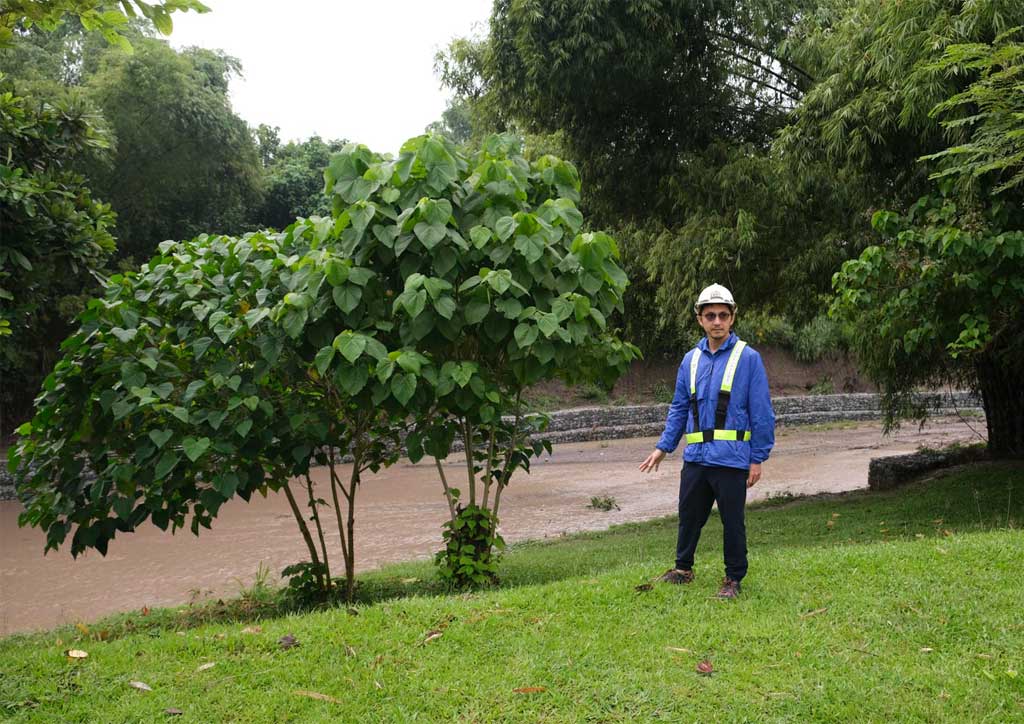
Where is it? It will be placed outside the stadium.
But where is it now? Is it being made? It’s being made already, and it was designed by Mañosa.
Mañosa, the son, right? No. I think it was the last drawing that Bobby signed before he passed away. You just have to confirm it with Gelo and Bambi, but I think he signed it before he passed.
I will. That’s a wonderful story. Yeah, and you know, we need to work with our best and brightest. Royal is doing the pavilion for the Expo 2020 Dubai. And we just felt that we, (BCDA and Budji+Royal) were in sync with the vision of what we wanted to do here, which Royal likes to call the ‘modern Filipino sensibility.’ It’s Filipino, like the bahay kubo, the jeepney, the capíz, the tinikling, but it’s a modern take of all of that.
Yes, it’s not literal. Yes, and with the timeline and budget for the development, Royal presented the best design. As you can see, the stadium is very simple and very easy to maintain. If it was too elaborate or had several claddings, we wouldn’t be done here.
Or, we couldn’t afford it. Since it’s very simple with only concrete and lahar finish, we were able to finish speedily while keeping the quality high and the maintenance low. I think the teamwork really gelled very early and very well.
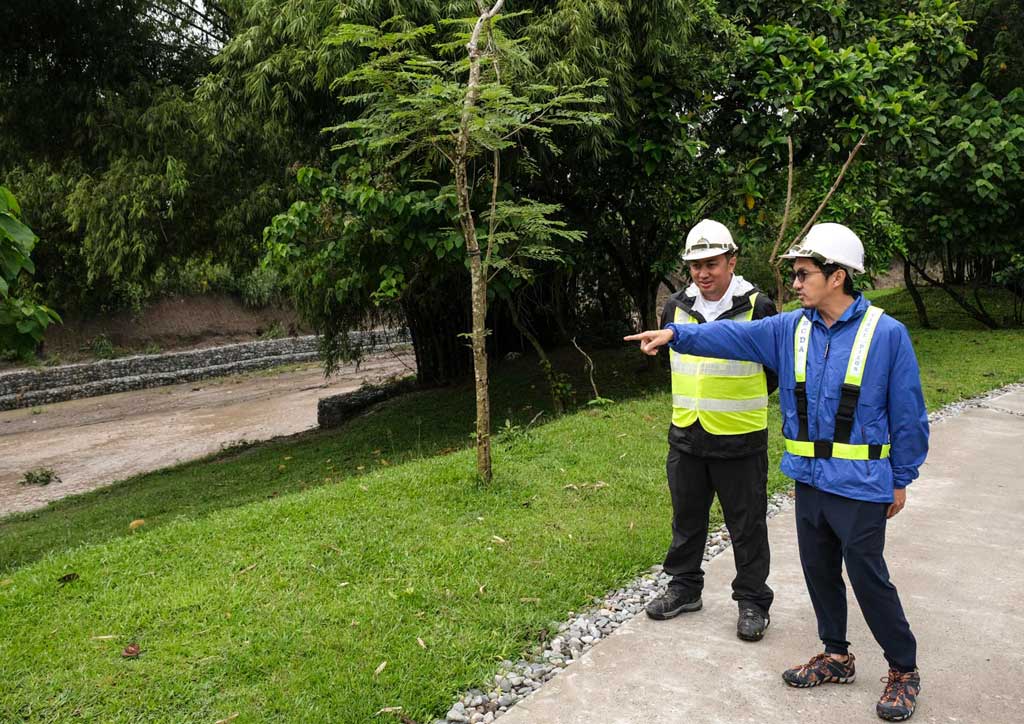
Tell us about the funding, because there have been some angry retorts about BCDA using public funds on the development of the New Clark City. BCDA’s revenue is public funding because it’s a government agency. But this development has been partially funded through a Private-Public Partnership with MTD Malaysia. The sports facilities are funded by the government because those facilities are public and for public use.
Okay, publicly funded. But the way it’s going to be run and maintained will be? We want to privatize the operations and maintenance because that is the only way to ensure that these facilities are well taken cared of. It’s apparent that the facilities operated and maintained by the government usually end up becoming very run-down facilities, and we don’t want that to happen here. It’s the same model for, say, the Clark International Airport, which Budji+Royal also conceptually designed. That was built using public funds, but the operations and maintenance are done by the private sector.
READ MORE: BUDJI+ROYAL reinterprets vernacular landscapes for Clark International Airport
How will the government get its ROI? As in any privatization effort, part of the revenues that are generated from the operations of the facilities goes to the government. The government gets a revenue share from the private sector, and that’s how the government recovers the funding in several years. But you know, it is the government’s responsibility to build structures like these. The private sector will never build something like this for the public because they are not going to be able to recover it in the span of time they want. Typically, the private sector wants to recover in 5-7 years.
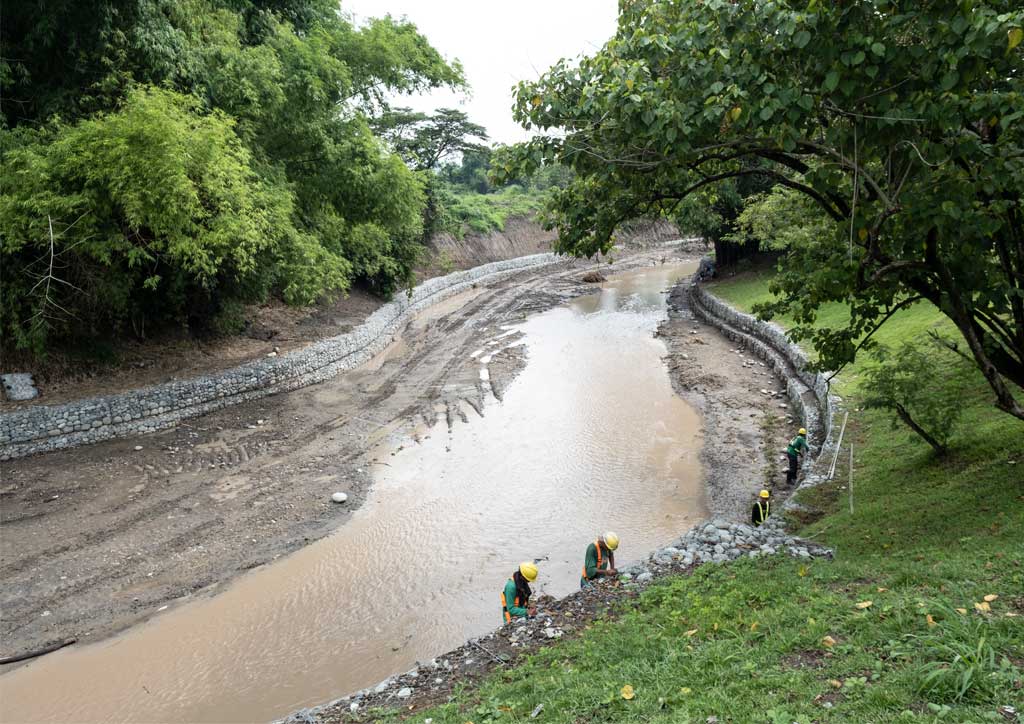
Yeah, it has to be built for the public good. I’ll just give you an example. After Joko Widodo of Indonesia won the recent presidential elections, he announced that the Indonesian government is going to build their version of New Clark City in Kalimantan Island. Guess how much the government of Indonesia plans on spending?
Ten times as much? 33 billion US dollars!
Which is how much more than this? The entire complex costs around 13 billion pesos. Indonesia wants to spend 33 billion US dollars on a new metropolis. I mean, what is the government going to spend its money for if not for facilities like these, which are for the public?
Why is it worth spending 13 billion pesos? Give me more arguments about why this is important. As I’ve said earlier, you need to build a new metropolis, and this is the beginning of that new metropolis. I guess the skepticism on the part of the public is that the past governments have not done that. We’re not just building a sports complex here. We are building an entire city. If you put it in that context, 13 billion pesos is nothing.
What is the cost of the complex? The entire city could cost anywhere between 3 and 5 billion US dollars. That’s the development of 4000 hectares, which will become the country’s new metropolis, and that is really nothing if you think about it.
Could you give me the numbers for the Aquatic Center and Stadium? The Aquatic Center is probably 2 billion pesos. The Athletic Stadium will cost about 4 billion pesos.
(Note: The Athletic Stadium cost includes the warm-up track beside it, as well as a field dedicated to the throwing sports such as the javelin, shot put, hammer, etc.)

And the NGAC would be? Between the Athletic Stadium and the Aquatic Center, it’s about 6 billion pesos, and the entire first phase of the national government center is about 13.5 billion pesos. If you look at what other countries spend on their facilities, we pale in comparison with what they spend.
I know, right. Royal was telling us that as well. Yeah, and it’s about time that we start building facilities like these that are truly world-class. ‘Wag naman natin titipirin ang mga kababayan natin, ‘di ba? (Let’s not be skimp on our fellow Filipinos, right?) Here, you see that the funds are really spent on top, world-class facilities, as you can see, and it’s something that would rival facilities even in developed countries. I mean, if you look at Aquatic Centers in countries in Europe, in the US, and in other developed countries in Asia, we measure up to them with these new facilities.
Really? Which ones? All of them.
Nicholas David (MTD): Right now, we are better than Singapore’s and Malaysia’s.
Ours is better than Singapore’s? How so? Look at the Aquatic Center of Singapore in the Singapore Sports Hub. To me, ours is better.
Why? It’s better designed and easier to maintain. Our pools are built better because Singapore used tiles in theirs.
Vince Dizon (BCDA): The way our Aquatic Center has been planned is better. It’s not a “box,” as Royal puts it. Typically, it’s just a box with aircon and everything. This one is built for the Philippines, with our tropical climate in mind. It’s inspired by things that are very Filipino, like the baklad and the capíz windows. You can’t put a price tag on good design. How much is Frank Gehry’s Guggenheim in Bilbao? That was built with government funds, with funds from the city of Bilbao. But what does a Frank Gehry-designed museum give to the city? It gives tourism, billions and billions of dollars in revenue to the city. It gives marketability to the city. So you can’t really put a price tag on architecture. You would agree to that, right?

We would. There will always be skeptics and critics, but if the government listens to all the critics, we’ll never get anything done.
For sure. How much is the monthly maintenance of the Aquatic Center? ADB is computing that right now so that when we privatize it, the potential private sector partner will know how much it would cost to maintain.
Ah, the potential private investor is not MTD Philippines? No. For the facilities, we don’t know yet.
BCDA will open it up to bidding? Yes, or we’ll accept proposals from them. But it needs to be the private sector, it cannot be the government. I’m gonna get criticized for saying that, but it’s okay.
No, it’s okay. I should think everyone knows that. Well, except for people in the government.
Haha! But you’re one of them, aren’t you? Yeah, I am. But you know…
Well then, if BCDA is selling the sports facilities, does that mean you needn’t worry about a legacy plan? No, we have to worry about a legacy plan because it’s got to be designed in such a way that will be commercially viable. It’s really a challenge. MTD will be our partner here for the government buildings, government housing, and the commercial facilities. For the sports facilities, we have to look for a private sector partner who can and who has a track record.
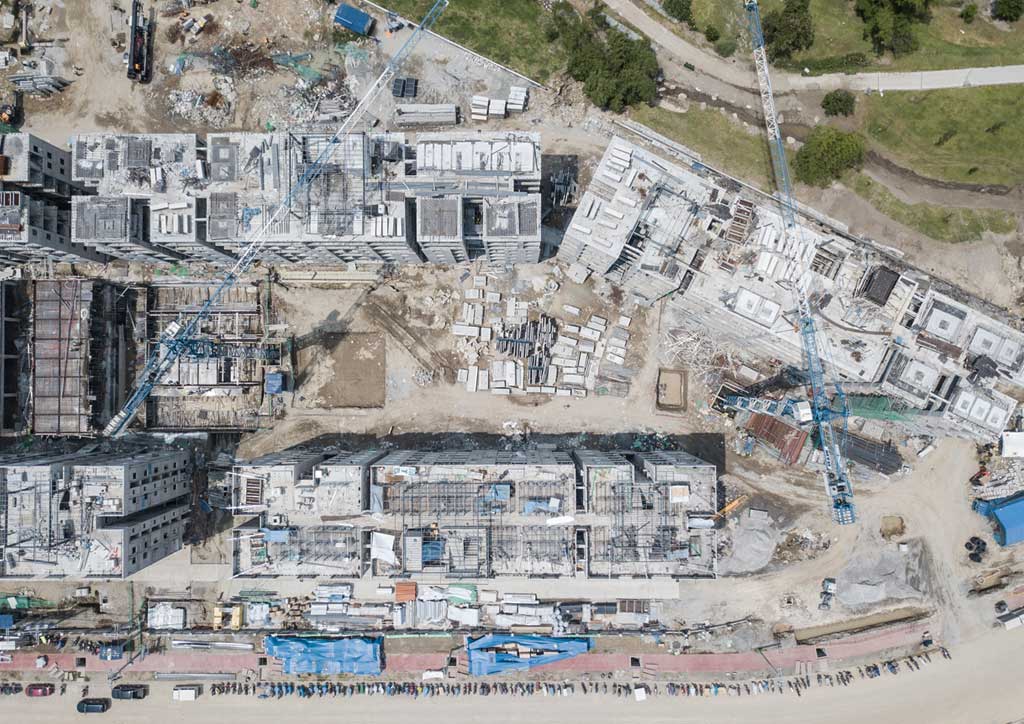
Yes, Rizal Memorial Stadium is government-run, see what happened. Yeah, government, because they chose it to be that way. But we’re not doing the same thing as Rizal and Ultra did. That’s all Philippine Sports Commission. This has to be private. It must be private.
How soon might there be a legacy plan that you can discuss? The legacy plan is in place and being done now. Right now we’re just finalizing the necessary feasibility studies to make the sports facilities commercially viable. That’s what we’re doing now.
Does that include the Athlete’s Village? That’s going to be part of the privatization of the facilities. The Athlete’s Village will form part of the sports facilities, which will be a dormitory-type housing for our athletes, and also for our transient government employees who don’t want to live here permanently.
If you sell those, then we can’t have another large athletic gathering here again, because we’ll have sold the place for the athletes to stay. No, no. One building will be exclusive for the athletes. You’re not gonna have sporting events every month, right? So, you need to make a way to make the facilities sustainable, and a way that we’ve learned from the experiences of London and Sydney is that after the major sporting events, the facilities become mixed-use. The houses and the units are sold, and some of the athlete’s dormitories were converted to dorms for young people.
You can build other facilities later on. For example, we want to bid for the Asian Games in 2030. Then we’ll build again. And then after that…
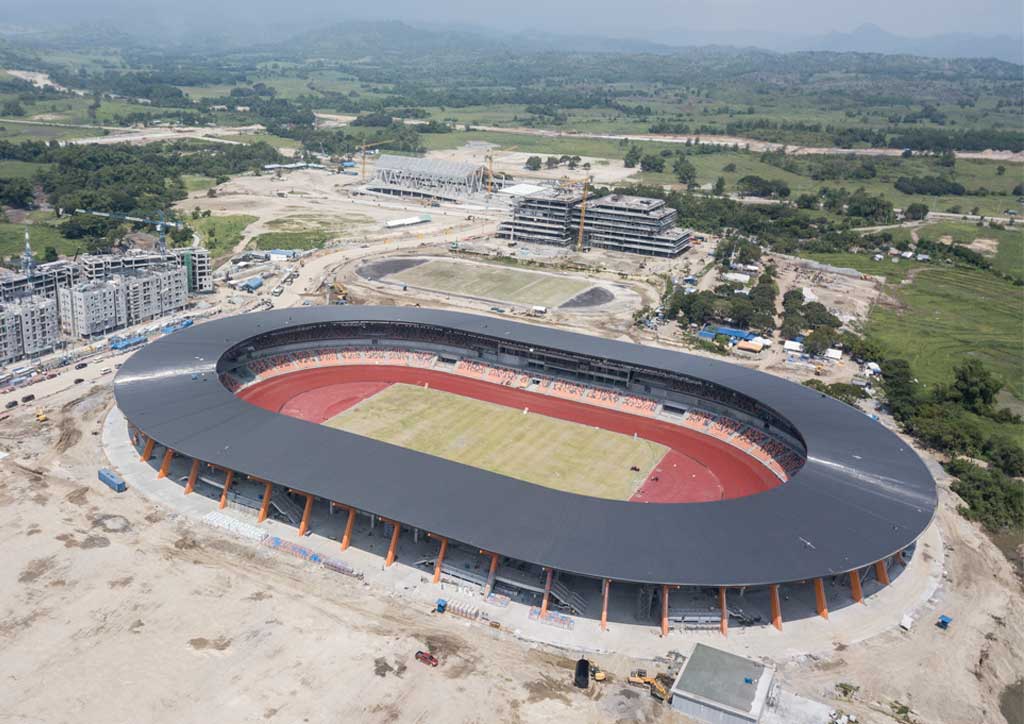
Sell again? Yes. That’s one way to make it sustainable. That’s the point. Even the sports facilities are mixed-use. They can be used for concerts. They can be used for other local or regional sporting events.
There’s skepticism about that, at least online. There’s always skepticism especially when it comes to government projects, that’s very understandable. But what we’re trying to do here is to plan it in a way that takes a very long view. It’s not something that you build and then nothing happens afterward. It’s really got to be planned and benchmarked in such a way that it outlasts everybody and it becomes a thriving city where people can live, work, play, and learn. That’s why the planning is so important and the way we benchmarked with successes abroad, that’s critical in the development of this project.
Which successes abroad? London. Sydney. We went there and saw that they’re successful. They were built and they didn’t become white elephants. Instead, they’re now thriving communities. If you go to the Queen Elizabeth Olympic Park, the stadium that they built is now the stadium of the West Ham United. The housing facilities that they built are now high-end housing, being sought-after by the residents of London. So, they’re successful models. There are also unsuccessful models, but that’s why we have to benchmark on the successful ones, and not the unsuccessful ones.
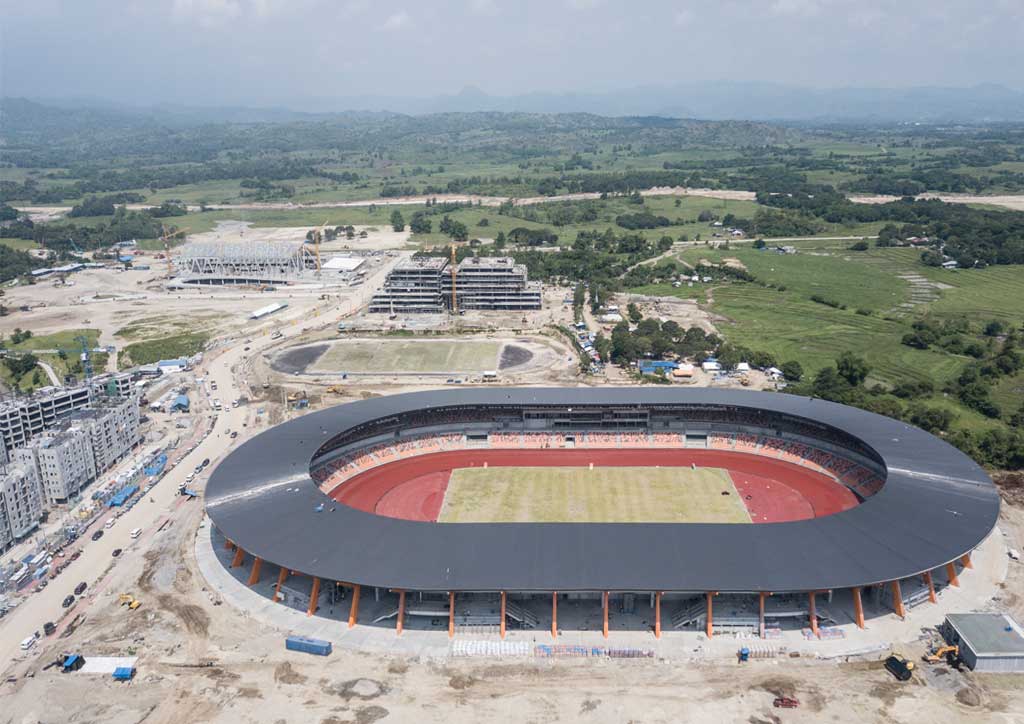
Alright. Do you have more to say about the legacy plan and how the sports facilities will not become white elephants? Well, I think the most reassuring statement we can give is that this will be a private and public sector partnership because once the private sector is involved, then there’s always the incentive to maintain it well, at the same time make a little money. That’s the key to sustainability. If you look at other facilities abroad, the reason why they’re sustainable and they don’t become white elephants is because they’re able to become commercially viable. Singapore Sports Hub in Singapore, that is run and maintained well because it’s commercially viable.
On the other hand, there are so many good things that are government-funded because they simply must be funded. Yeah. The construction needs to be government-funded because the private sector will not build a Stadium like that. They just won’t. Kawawa naman ang Pilipinas kung ganoon. (Where would the Philippines be if we relied completely on the private sector.)
I have to say, though, that with BCDA behind the project, there is an assurance of quality. I guess the general distrust stems from government projects awarded to contractors nobody knows. Unfortunately, the past has given that conception. But what we’re trying to do now is we’re trying to change all of that, not just for BCDA but for all government agencies. I think that this is the first step. The things that we are building now, with the new airport and new facilities that are being built, hopefully, that will create that kind of momentum so that we won’t backtrack anymore and go back to the old ways.
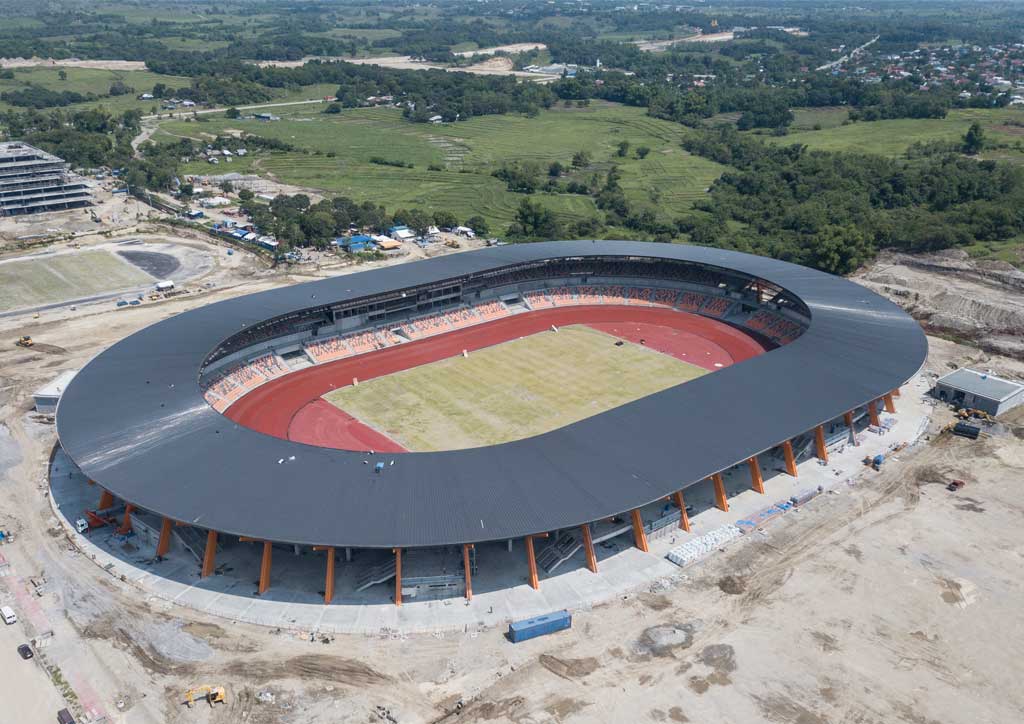
I have a question to ask and it’s about beauty. I miss it in public conversation because modernism seems to focus exclusively on functionality, making talk about beauty, you know, baduy (cheesy). Not to us, not to us.
Okay. Tell me why it’s important to you. Design is so important because it’s reflective of a nation’s and a people’s character and identity. If you create a box, it doesn’t say anything about us, Filipinos. You might as well be anywhere in the world, and there’s nothing about that box that says, “This is Filipino.” Beauty to us is about the expression of what it is to be Filipino. If we are able to express what is being Filipino in our architecture, especially in public architecture, then that, in all certainty, is going to be beautiful. I think the narrative or the story behind the architecture will result in beautiful architecture, and that is what we see here. The Athletic Stadium that Budji+Royal designed, which story is so beautiful as it talks about the resiliency of the Filipino spirit, is inspired by Mount Pinatubo. Even the lahar finish of the stadium comes from that part of our history, which was a disaster when the volcano erupted, but now rising from that disaster, you have this beautiful structure taking inspiration from that. In that sense, it’s beautiful. Unfortunately, in the past, there wasn’t anything like it. What was the last public building that you would consider a design masterpiece?
The CCP, of course. PICC. Exactly!
The Coconut Palace. All the greats. All the works of Locsin, of Mañosa. But, since that time, was there anything else? None. Beauty and architecture are never frivolous. I mean, look at countries, even poor countries, they have iconic architecture, iconic facilities, that talk about who they are, and that’s the most important thing. That to me is what beauty is.

Does the BCDA have an agenda on beauty? It’s not a beauty agenda, really. It’s an agenda to provide the Filipino with something they can enjoy, and I’m talking about everybody. Whether you’re rich, poor, young, old, anyone can enjoy something—to use the cliché—world-class, something that people can only enjoy if they’re OFWs (overseas Filipino workers) living in a developed country. But now they can enjoy it here, and these are all public facilities that can be enjoyed by everyone. The River Park that we walked along, that’s for everyone. The problem in the Philippines is that you can only enjoy beautiful and world-class things in exclusive places.
I loved how the BGC started with public art and public parks where people could hang out. But now there are signs saying, “Don’t walk on the grass” or “Skateboarders not allowed,” and other verboten stuff. Where else are the kids supposed to go? Nawala na. (It’s gone already.) That’s the key to engaging and working with planners that have designed places like this successfully in the world. Look at Singapore, everything is public. The roads have dedicated bicycle lanes and dedicated pedestrian lanes. Unfortunately, in Manila, everything is an after-thought. Public spaces are always, “Uy! Nakalimutan natin ‘to.” (“Oops, we forgot this.”) Or, “Okay na ‘yan, lagyan na lang natin ng konti.” (“That’s fine, let’s just add a bit.”) In other countries, especially in countries that value public space, those are the first things that are thought of, and that is why MTD is such a great partner because the first thing that was developed and completed was the River Park. It was the very first project they started and finished first, and it’s 4.5 hectares. It’s huge.
I like what you say about New Clark City and the River Park being for the people but when parts of this development are privatized, the new owners may start saying, “You’re not welcome unless you’re invited.” No, we can’t allow that to happen. That’s why you need the government to regulate it.
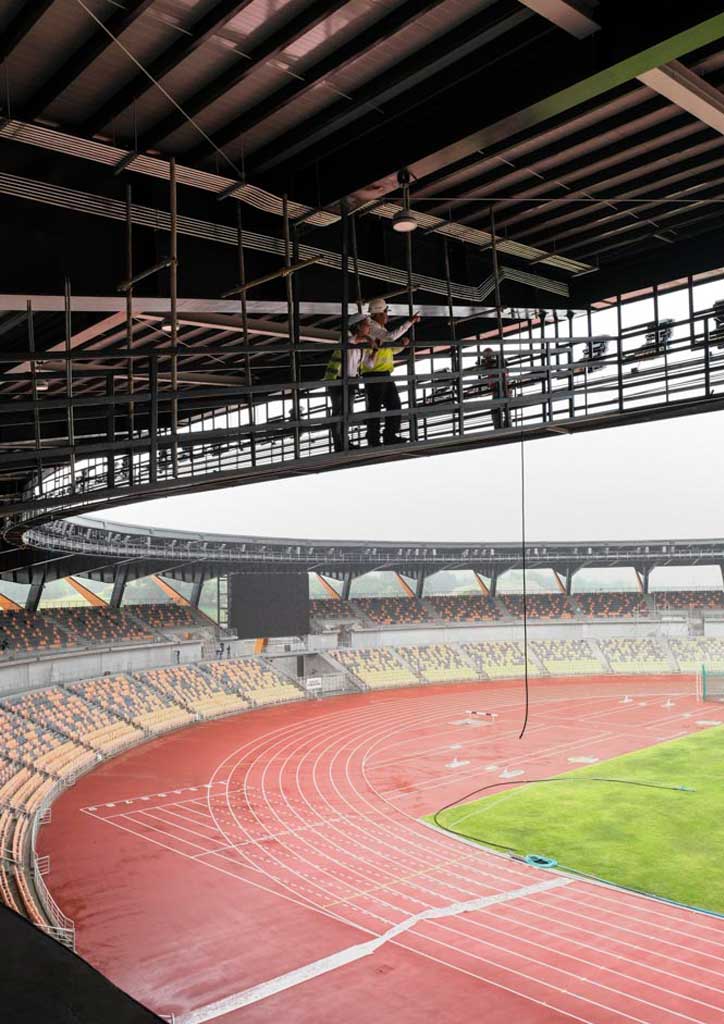
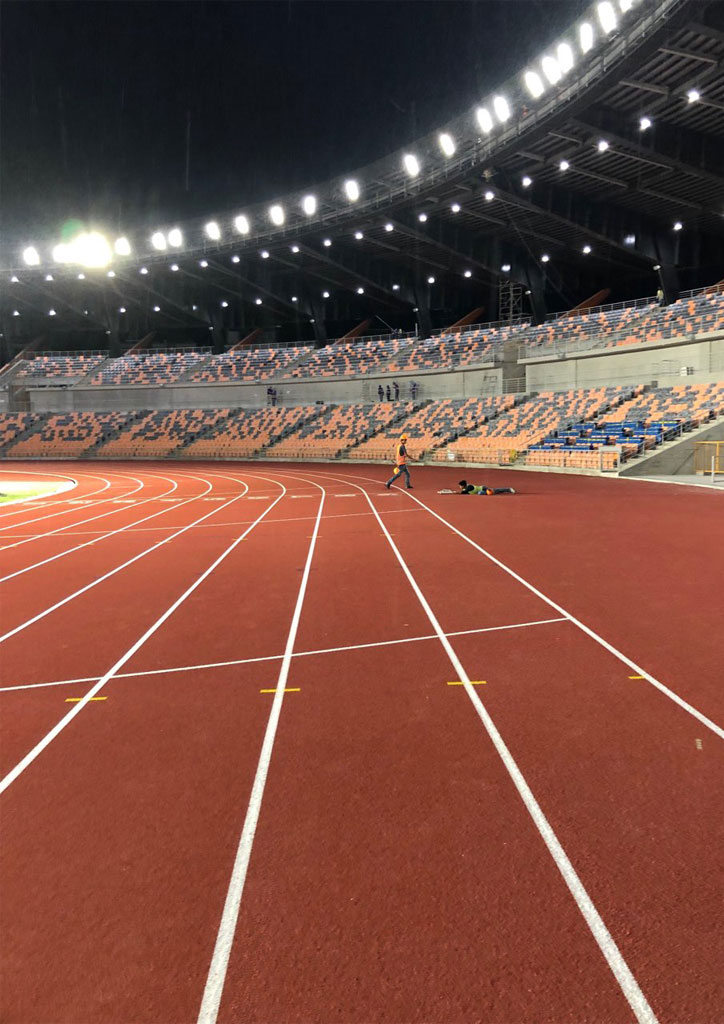
You will. Yes. That’s why the government and the private sector always have to work together. When you privatize something, it’s the government that still makes the rules. We make the rules. The senior citizens will have discounted fares, students will have discounted entrance fees. This is like what they do in other countries. They’re not going to be free. I mean, if you’re gonna use the swimming pool, it can’t be free because you have to maintain it. Besides, if it’s free, more often than not, that’s when you can’t maintain it. And people destroy it. People will have to be able to say, “I’m going to pay for this even if it’s affordable because that now gives me the incentive to take care of it.” There’s got to be a balance between making it viable and sustainable, but at the same time, making it very open to the public.
What does it take, Vince, for local government units to have the same kind of responsibility that the BCDA has for the properties that are under its care? What we need to do is to show them a benchmark, a best-case scenario that they can model and follow. We think that Clark is going to be that model, that’s why we always want to entertain local government units, provincial governments, for them to see what’s been done here and how it’s going to be run. So that they can use the model and develop something similar in their own areas. That’s the key. We just have to start somewhere.
Well, the SEA Games is just a couple of months away. You excited? It’s something.
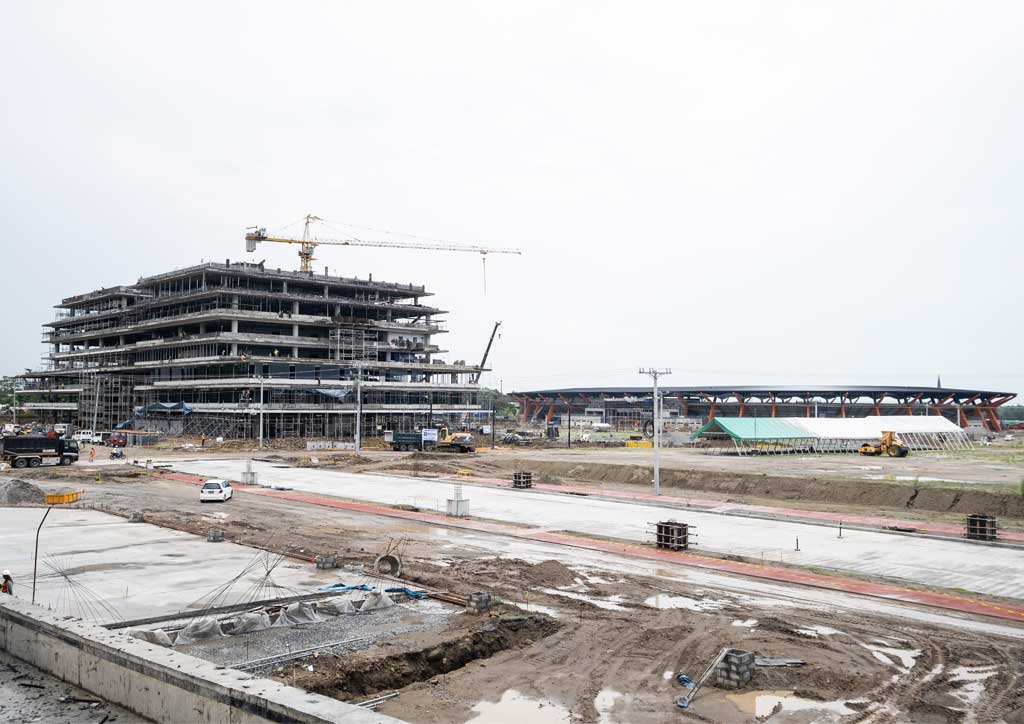
It’s something? Haha! Describe the feeling. It’s very difficult to describe, to be honest, especially when I think that the last time the Philippines built facilities like this was in 1934 when we built the Rizal Memorial Complex. It was world-class then, but not anymore, 80 years later. We really needed to build something new for everybody, because this city is going to be for everyone, especially the sports facilities for our athletes.
The successful hosting of the SEA Games will be a major goal for us. That’s just not us, that’s everybody, that’s the Philippine Sports Commission, that’s the Philippine committee, organizing committee, and all of the sports officials. And we’re working with them to make this a success. But I think the long-term goal is to really make sure that people enjoy this. It’s really for them, for us, for everybody.
New Clark City is probably one of the most exciting things you’ve done, right? Oh, yeah. I mean, it’s a city! You’re building a city. Who gets to do that in their lifetime?
Alright, I’ll talk to you the next time you build another city. Oh, no, no more. This is enough. (Laughter)
We’ll be back, for sure. In October, let’s go. When it’s all landscaped and done.
Article Credits:
Interview by Judith Torres
Introduction and edits by Denny Mata
Photographed by Ed Simon


